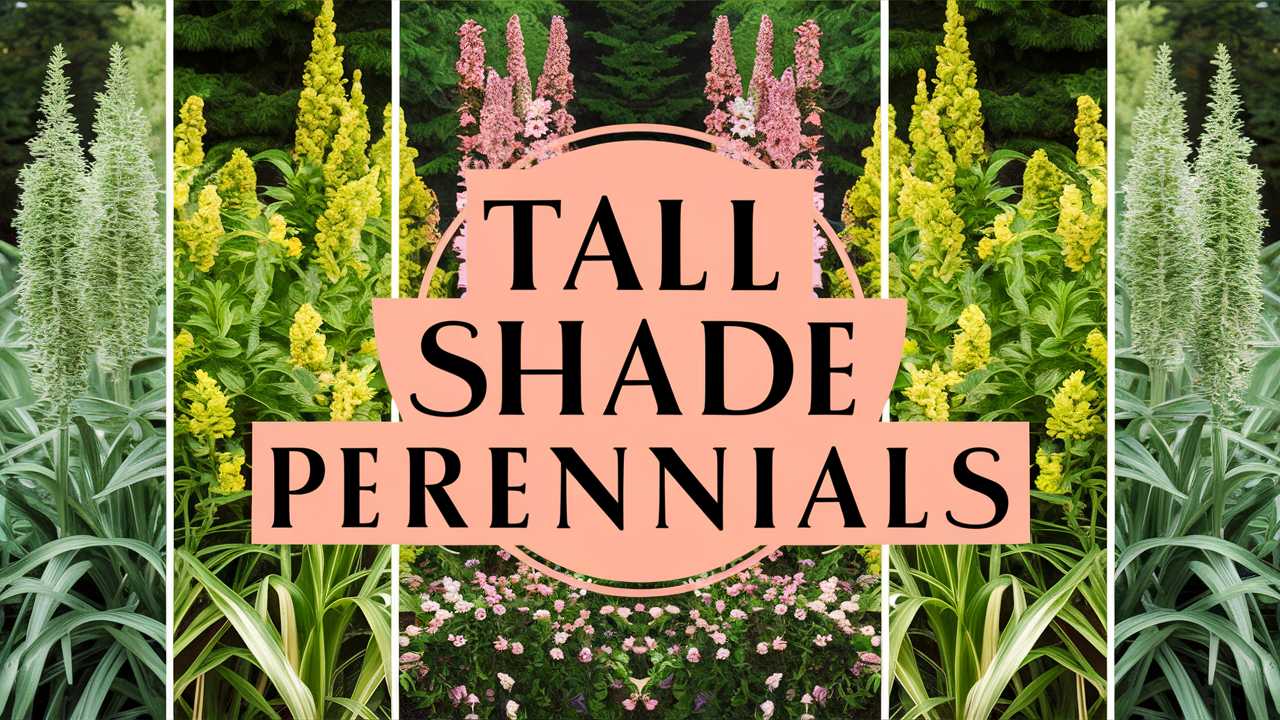If you’re looking to elevate your garden’s aesthetic, tall shade perennials can create a dramatic backdrop of vibrant colors and intriguing textures.
These perennial plants not only thrive in low-light conditions but also add vertical interest and depth to shaded areas. Let’s explore some stunning options that can help you design a shaded oasis, keeping your garden lively even in dappled light.
Foxglove (Digitalis purpurea)
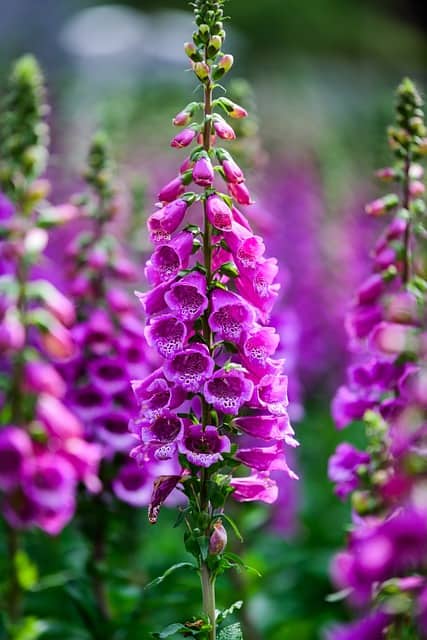
Foxgloves are one of the most enchanting tall perennials you can choose for partial to full shade. With their towering spikes that can reach up to six feet, these plants produce enchanting bell-shaped flowers in a variety of shades, including pinks, purples, and whites. They attract pollinators like bees and hummingbirds, making them a fantastic choice for enhancing biodiversity in your garden.
One important thing to keep in mind is that foxgloves are biennial — they bloom in their second year, so patience is key. Moreover, all parts of the plant can be toxic if ingested, so it’s prudent to plant them in areas away from children and pets. When planted in clusters, foxgloves can create a stunning vertical silhouette that breaks the monotony of lower-growing plants.
Delphinium (Delphinium elatum)
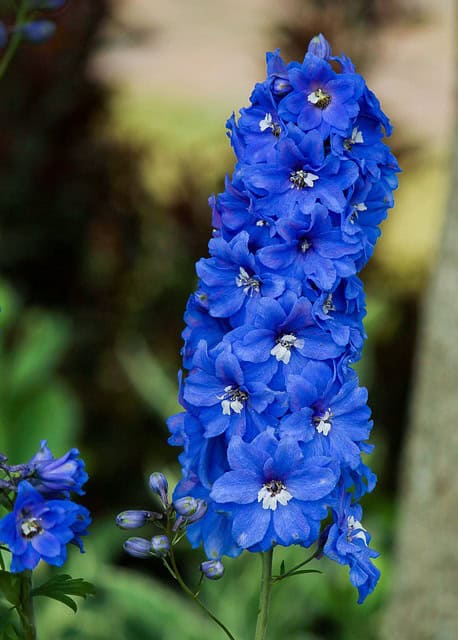
While delphiniums traditionally flourish in full sun, certain varieties stand resilient in partially shaded areas. These stunning perennials can rise to heights of around five to six feet, boasting tall, elegant flower spikes adorned with blue, purple, or white blooms that reach for the sky. Delphiniums are not only beautiful; their sturdy stature provides excellent height to your garden arrangements.
For optimal health, these flowers appreciate well-drained soil and regular watering to maintain their lush appearance. When growing delphiniums, providing some support can help them withstand wind and rain, allowing them to showcase their beauty longer. Incorporating these dramatic blooms in your partial shade garden can create a splendid focal point that draws the eye upward.
Hollyhock (Alcea rosea)
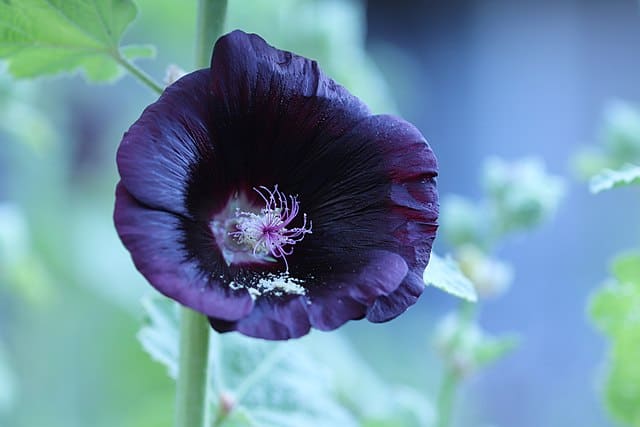
Hollyhocks are garden favorites with their old-world charm and tall stature, often elevating to heights of six to eight feet. These striking plants create vertical layers in your garden and come in a variety of bright colors. While they thrive in full sun, they can tolerate light afternoon shade, making them adaptable for shadier spots.
Hollyhocks also bring an element of nostalgia, often associated with cottage gardens, and serve as perfect backdrops for shorter flowering perennials. They are biennial as well, meaning they require a little time to establish before blooming, but the show they put on in late summer is worth the wait. Ensure adequate spacing between plants to allow for air circulation, reducing the risk of disease.
Astilbe (Astilbe x arendsii)
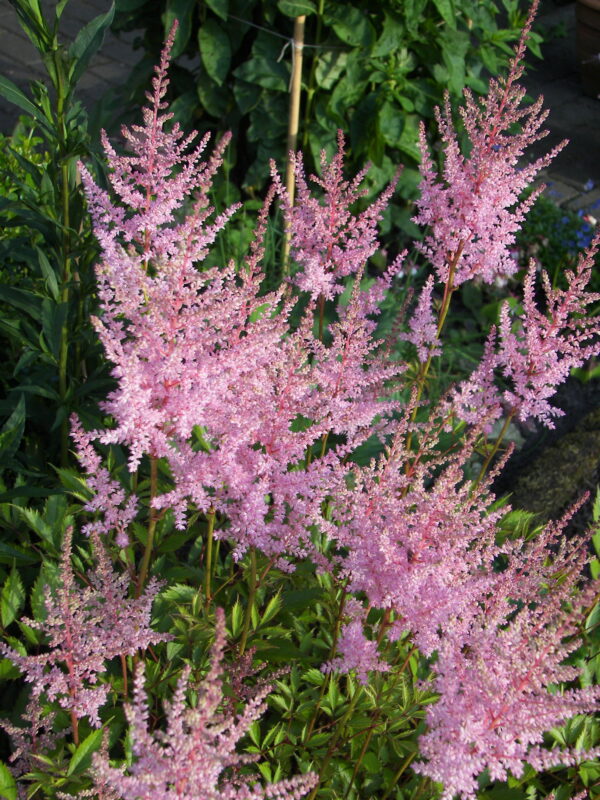
Astilbes are known for their feathery plumes and lush foliage, making them a versatile choice for shady garden spots. Ranging from two to four feet in height, these colorful perennials bloom in shades of pink, white, red, and lavender during the summer months. The unusual texture of the feathery flowers adds a contrast that can create a whimsical element in your garden.
These plants favor moist, rich soil, thriving in areas where many other plants might struggle. They’re perfect for adding interest near water features or in woodland gardens. Combining astilbe with ferns and hostas can create a shaded paradise, where the colors and patterns play off each other beautifully.
Japanese Anemone (Anemone hupehensis)
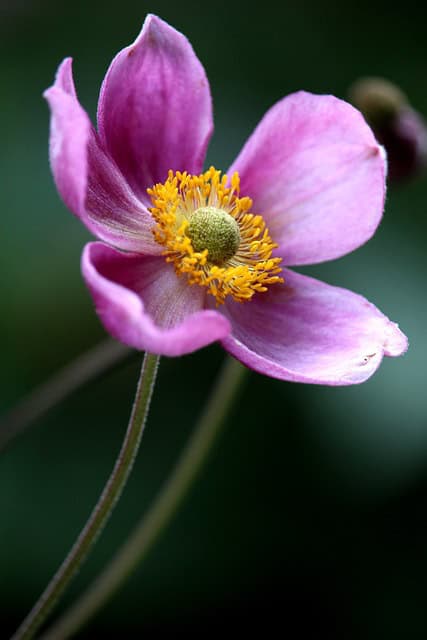
The Japanese Anemone is a graceful perennial that flourishes in part shade. With its delicate, flowering stems reaching up to four feet tall, it gives off a soft vibe that plays well in transitional spaces, such as between sun and shade. Flowering in late summer and early fall, these perennials produce exquisite blooms in white and pink that brighten up shaded corners.
Anemones thrive in moist, well-drained soils and are relatively drought-resistant once established. They can spread through rhizomes, making them perfect for naturalizing in your garden, but do keep an eye on them as they can become a bit rambunctious. They look beautiful when planted alongside other late-blooming perennials, creating a seamless transition from summer to fall.
Cimicifuga (Actaea racemosa)
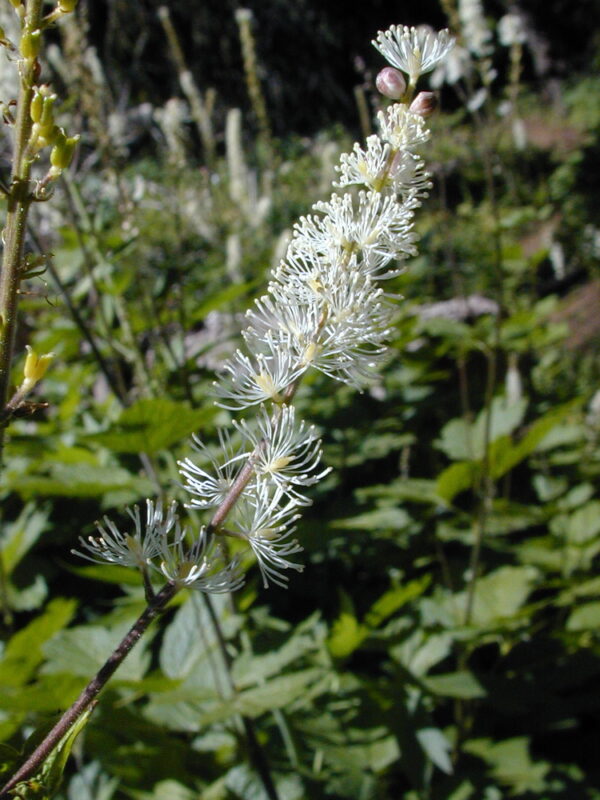
Cimicifuga, or black cohosh, is another tall perennial that thrives in shady spots, growing up to six feet with elegant white or cream flower spikes. It brings a unique structural element to garden borders and is particularly sought after for its late summer and early autumn blooms. The flowers release a delightful fragrance, which can invite beneficial insects into your garden.
This perennial prefers rich, well-drained soil and benefits from consistent moisture. Its dark green foliage can provide a nice contrast to lighter-colored plants, and when combined with hostas or ferns, it can create a layered look. Black cohosh is also reputed for its medicinal properties, historically used by Native Americans for various ailments.
Ligularia (Ligularia dentata)
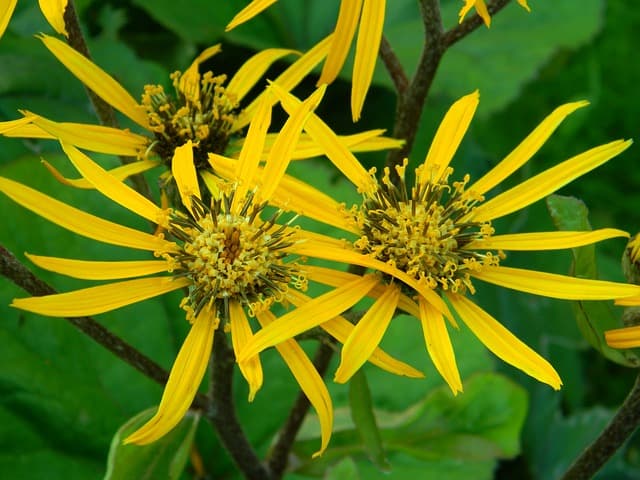
Ligularia, known for its bold leaves and striking flowers, can grow to heights of up to four feet. It is perfect for adding a dramatic flair to shaded areas. Requiring moist soil, this perennial is often found in woodland gardens, where it thrives in dappled light conditions.
The bright yellow, daisy-like blooms atop tall spikes are a stunning contrast against its dark green, heart-shaped leaves. Combining ligularia with other shade-loving plants provides a lush, textured look, almost resembling a tropical setting. Be mindful of sunlight; too much can scorch its leaves, so placement is essential for this beauty to fully express itself.
Goat’s Beard (Aruncus dioicus)
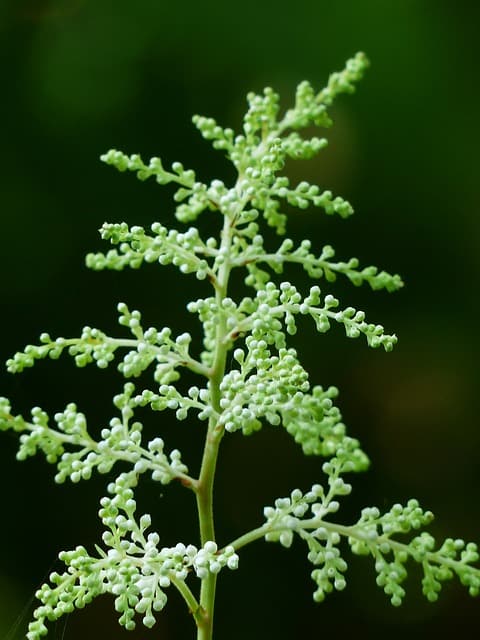
Goat’s Beard is a lesser-known tall perennial that can reach heights of five to six feet. With its feathery plumes and lush, green foliage, it creates a stunning visual texture in shady gardens. The plant prefers rich, moist soil and can thrive in both shade and partial sun, making it adaptable to various garden environments.
It produces creamy white flowers in late spring to early summer, attracting pollinators while also adding an airy quality to the garden. Goat’s Beard pairs beautifully with other tall perennials and ferns, creating a naturalistic, woodland feel. Its taller structure can fill gaps in the garden without overwhelming shorter plants.
Toad Lily (Tricyrtis hirta)
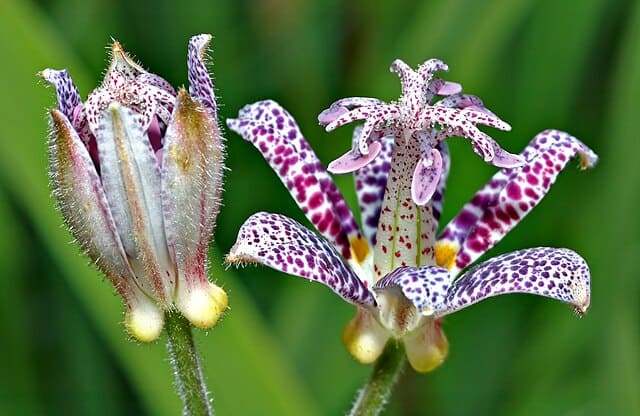
Toad lilies are remarkable for their intricate, spotted flowers that resemble orchids. They reach heights of around three feet and typically bloom in late summer to early fall, providing a splash of color when many other perennials have finished flowering. Toad lilies thrive in part to full shade, making them a great choice for the darker corners of your garden.
These unique perennials prefer moist, well-drained soil rich in organic matter. Their exotic appearance allows you to create a striking contrast against lush greens, and they pair wonderfully with other shade-tolerant plants like ferns. With their unique blooms, they are sure to be a conversation starter among garden visitors.
Bear’s Breeches (Acanthus mollis)
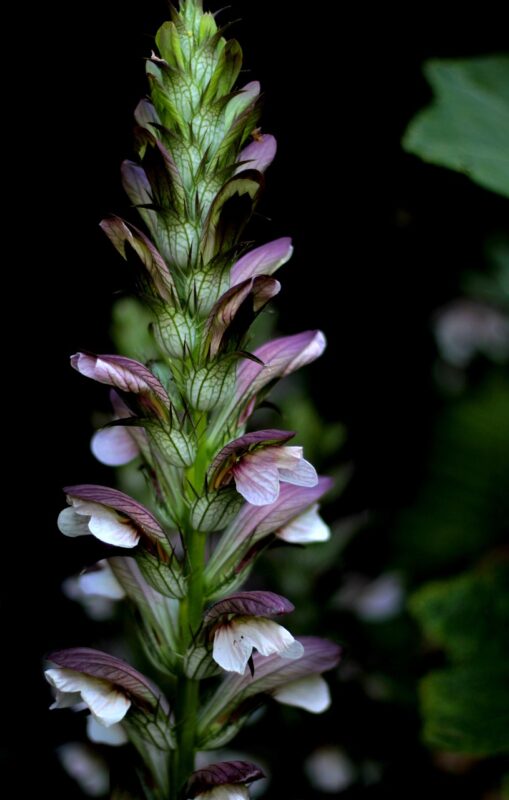
Bear’s Breeches, with its architectural foliage and majestic flower spikes, can reach up to four feet in height. This perennial thrives in partial shade to full shade and produces striking white flowers framed with purple bracts. Its bold leaves can bring a tropical feel to any shaded area, creating a dramatic effect.
These plants are also quite drought-tolerant once established, making them an excellent option for low-maintenance gardens. They generally spread through rhizomes, so consider providing ample space for them to flourish. Incorporating bear’s breeches in your garden can help fill vertical spaces, ensuring eye-catching beauty year-round.
Cardinal Flower (Lobelia cardinalis)
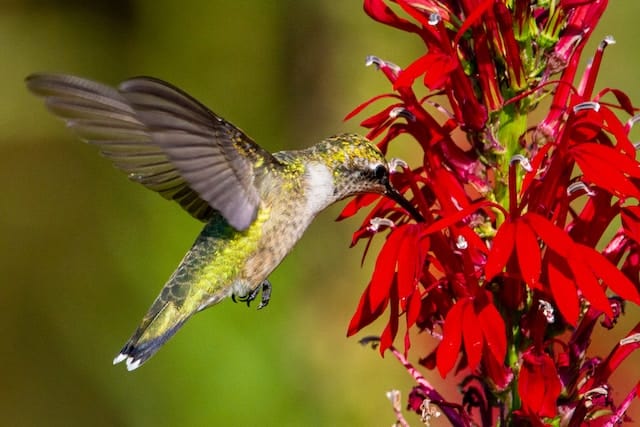
The Cardinal Flower is known for its vibrant red spikes that can reach heights of three feet or more. This perennial thrives in moist, low-light environments, such as beside ponds or in wetland gardens. The bold color of the flowers is particularly alluring and attracts hummingbirds, adding life and movement to your garden.
Plant cardinal flowers in groups for a breathtaking burst of color in shaded areas. They prefer consistently moist soil, making them ideal for garden settings with adequate watering. These flowers will bloom from midsummer into early fall, ensuring that your garden maintains visual interest long after many others have faded.
Meadow Rue (Thalictrum aquilegifolium)
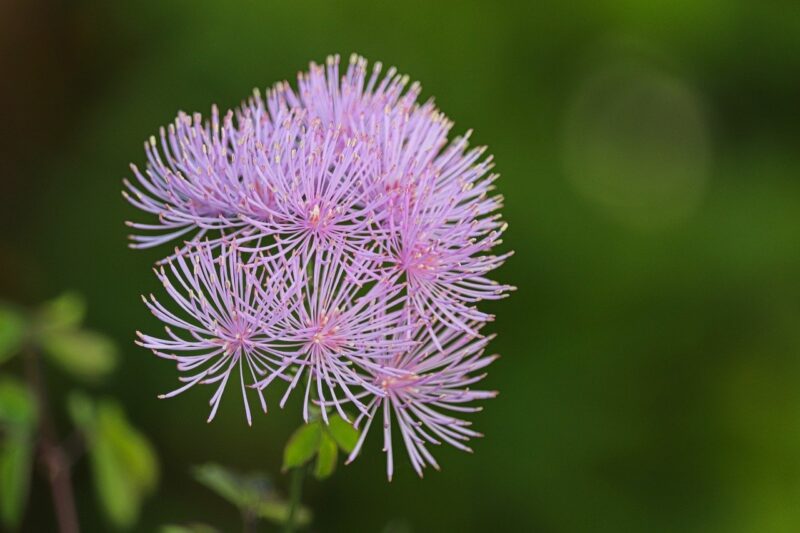
Meadow Rue adds a delicate touch to shaded gardens with its airy foliage and stunning blooms. Growing up to five feet tall, it features conspicuous clusters of small, star-shaped flowers in shades of purple or white. This perennial thrives in part shade and does best in rich, moist soils.
What sets meadow rue apart is its billowy foliage, providing a soft texture that balances out harder lines from traditional garden structures. When planted with other shade-loving perennials, it can bring an ethereal quality, softening the edges of your garden with its light, airy presence.
Solomon’s Seal (Polygonatum odoratum)
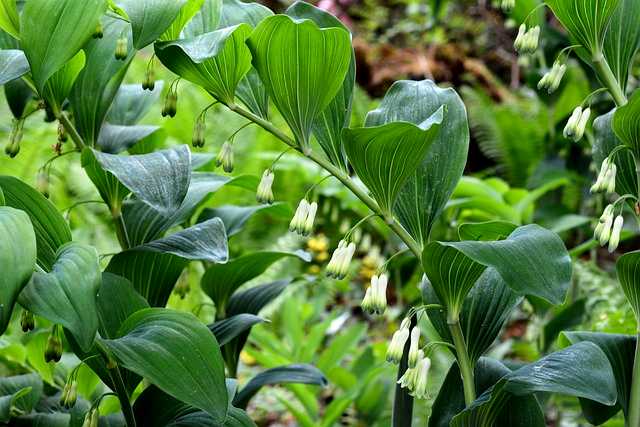
With its arching stems and elegantly nodding, tubular flowers, Solomon’s Seal is a graceful addition to any shady garden space. Growing up to two feet tall, this perennial thrives best in rich, well-draining soil and prefers dappled light. Its unique foliage provides a textural contrast among other plants.
This woodland plant is especially valued for its fragrant flowers that appear in late spring to early summer, attracting various pollinators. By creating small colonies, Solomon’s Seal can enhance the depth of your garden landscape, making them feel more lush and inviting.
Bellflower (Campanula persicifolia)
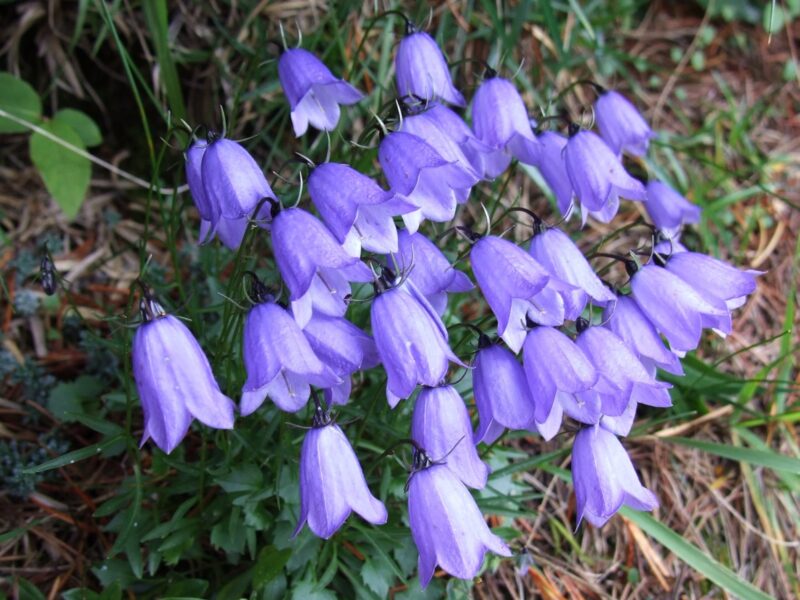
Bellflower is a charming perennial that can add both height and whimsy to your shaded garden. Growing up to three feet tall, it blooms in clusters of bell-shaped flowers, typically in shades of blue or purple. While they prefer full sun, they can adapt to partial shade in many environments, making them versatile for different garden locations.
These flowers can be a stunning addition at the back of a border, where their long stems sway gracefully in the breeze. Bellflowers are often low-maintenance, thriving in well-drained soil with regular watering. Their cheerful blooms can cheer up any corner of your garden, bringing a touch of joy and color.
Japanese Forest Grass (Hakonechloa macra)
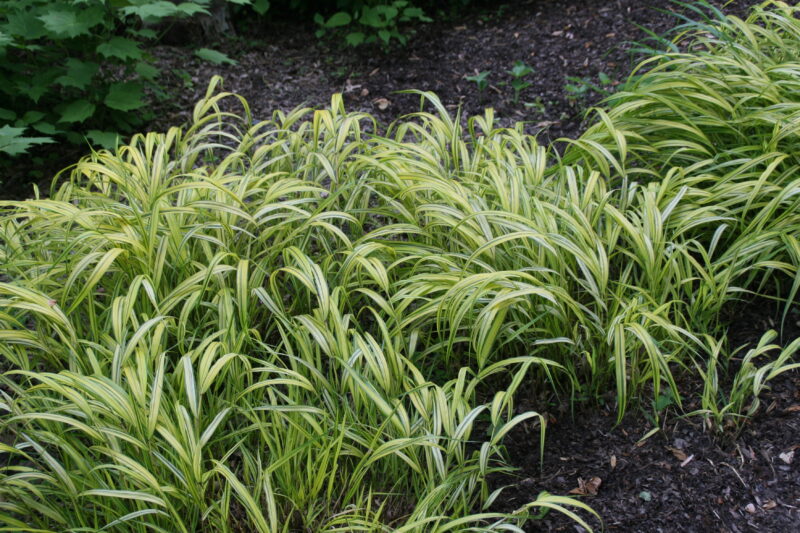
Japanese Forest Grass is a beautiful, ornamental grass that can rise up to two feet tall, offering a unique and soft texture for shady garden areas. Its lush green leaves can turn to stunning golden hues in the fall, providing seasonal interest and color. This plant thrives in moist, well-drained soil and is perfect for shaded borders or woodland gardens.
Utilizing Japanese Forest Grass effectively can create a tranquil setting, ideal for enhancing pathways or garden benches where you can sit and appreciate nature. Their gentle movement in the wind adds a dynamic element to static garden structures.
Elephant’s Ears (Colocasia esculenta)
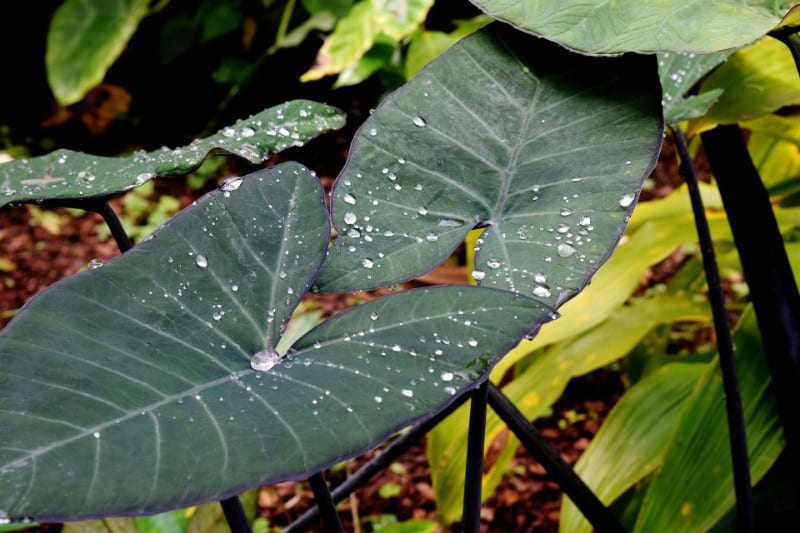
Elephant’s Ears are a bold choice for adding tropical flair to shaded spaces. With gigantic heart-shaped leaves that can grow up to three feet broad, these plants provide a stunning architectural element. Thriving in full shade or partial shade, Elephant’s Ears do best in rich, consistently moist soils.
These large foliage plants can dominate a garden, making them ideal for creating a dramatic focal point. Their unique appearance can evoke a tropical paradise, allowing you to blend vibrant colors and textures among the shadows. Pair them with smaller shade-loving plants to create a vibrant contrast.
Rodgersia (Rodgersia aesculifolia)
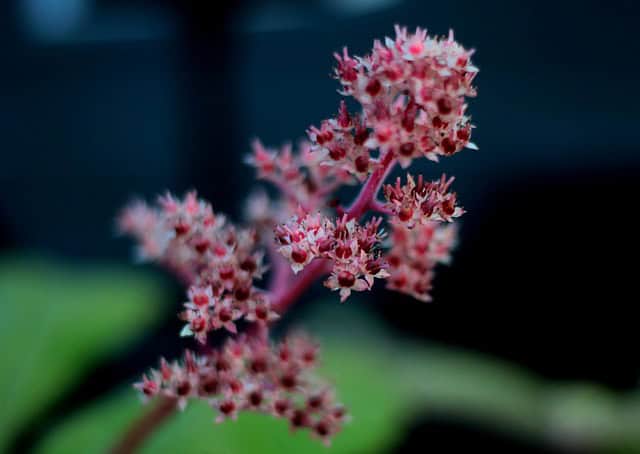
Rodgersia is a stunning perennial ideal for shaded corners, growing up to five feet tall while sporting large, textured leaves. The lovely flower spikes emerge in mid-summer, offering a beautiful addition in shades of white, pink, or red. This plant prefers moist, well-drained soil, making it perfect for those wetter areas of your garden.
This perennial forms a magnificent visual presence, ideal for structuring a shaded garden. When planted alongside other woodland plants, it creates harmony and balance. The bold leaves not only beautify but provide a solid background layer, allowing flowers to pop in contrast.
Giant Leopard Plant (Farfugium japonicum ‘Giganteum’)
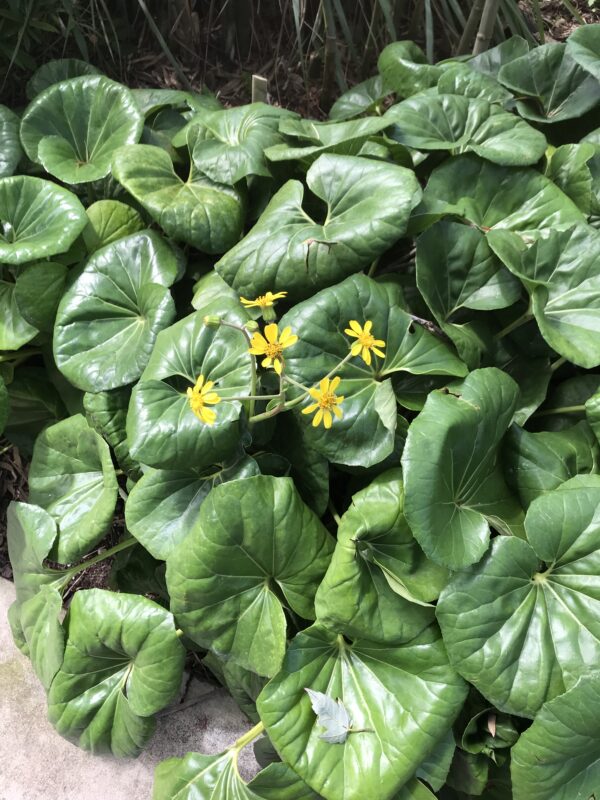
Farfugium ‘Giganteum’ can reach remarkable heights of up to three feet, with eye-catching, rounded leaves that create an impressive backdrop for any garden. Preferring shady spots, these plants are well-suited for areas that don’t receive much sunlight. The large leaves bring a tropical appeal, adding a dramatic flair to shaded environments.
Giant Leopard Plants produce yellow flowers in the late summer or early fall, adding seasonal interest. Their lush appearance contrasts beautifully with other perennial flowers, making them a choice that evolves as the seasons change.
Canna Lily (Canna indica)
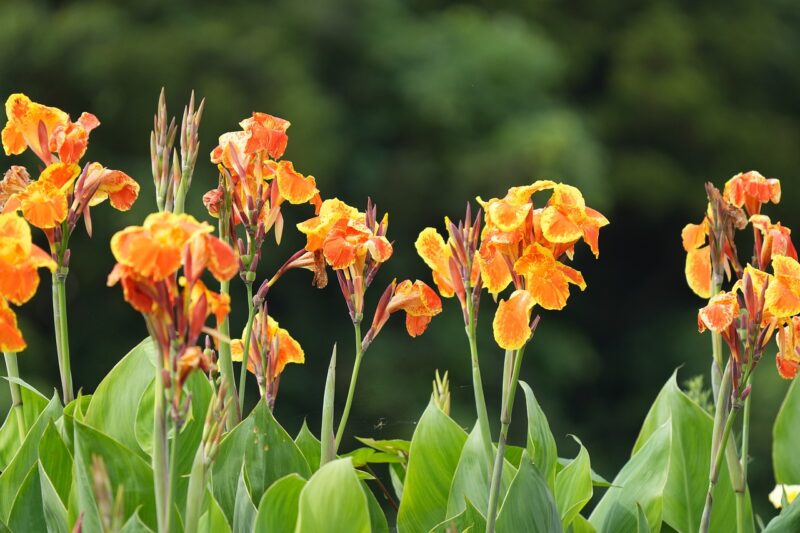
Canna lilies are fantastic for both sunny spots and partial shade, with some varieties reaching up to six feet tall. These exotic-looking plants not only produce vibrant flowers in various colors but also boast large, dramatic leaves that can enhance your garden’s overall texture. Their tropical appearance makes them a hot favorite for mixed borders or water gardens.
Canna lilies prefer well-drained soil with consistent moisture, making them versatile in different planting locations. When planted in groups, they can create a stunning visual display that draws attention and adds movement. Their blooms also attract hummingbirds and butterflies, ensuring your garden stays lively and vibrant.
Shooting Star (Dodecatheon meadia)

Shooting Stars are unique, charming perennials that flourish in partial shade and are ideal for woodland gardens. Growing between one to two feet, they boast delicate, nodding flowers in shades of white or pink on tall stems. Their flowers take on a star-like shape, adding an ethereal quality to shaded spaces.
They prefer moist, well-drained soils and can even handle some drought once established. Planting them in groups can create a striking visual display, particularly when paired with other shade-loving companions. These whimsical plants can serve as a gentle reminder that beauty can flourish in the shadows.
Giant Hyssop (Agastache foeniculum)
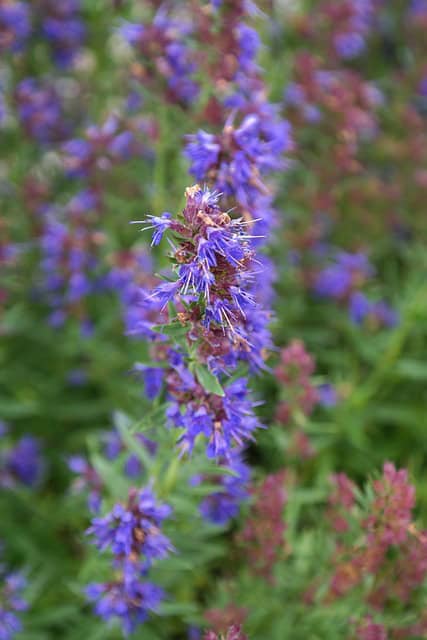
Giant Hyssop is a perennial that adds both height and texture to shaded gardens, reaching around three to four feet tall. Known for its aromatic leaves, it blooms with spikes of purple flowers that attract hummingbirds and butterflies alike. While it does prefer full sun, it can also thrive in light shade, providing flexibility in planting options.
This resilient plant prefers well-drained soil and can tolerate some drought, making it relatively low-maintenance. It brings not only beauty but also fragrance, making it a delightful addition to your garden landscape. Combining Giant Hyssop with other perennials can create a colorful tapestry in your shaded garden.
Bleeding Heart (Lamprocapnos spectabilis)
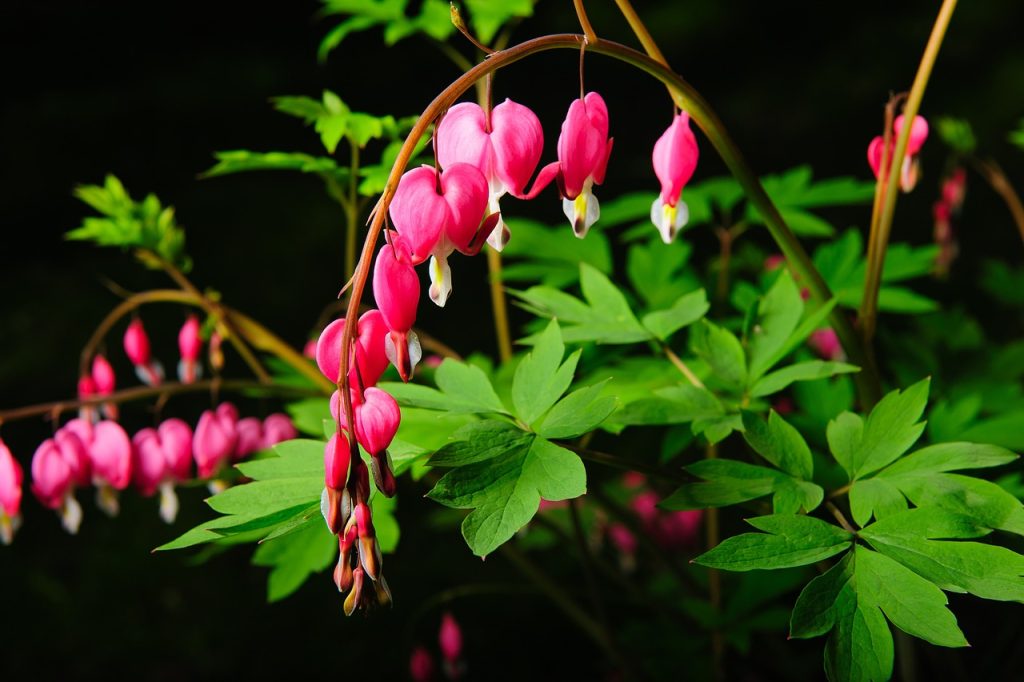
The Bleeding Heart is a classic perennial that flourishes in partial to full shade. With its heart-shaped pink or white blooms drooping gracefully on arching stems, it offers a romantic touch to any garden space. Typically reaching heights of two to three feet, it provides a lush, dense foliage that can beautifully fill in gaps.
Bleeding Hearts can thrive in a variety of soil types, as long as they are well-draining. They bloom in spring, marking the transition from cold winter days to the warmth of summer. Their unique shape and color, paired well with other spring favorites, can transform your garden into a romantic sanctuary for all to enjoy.
Monkshood (Aconitum napellus)
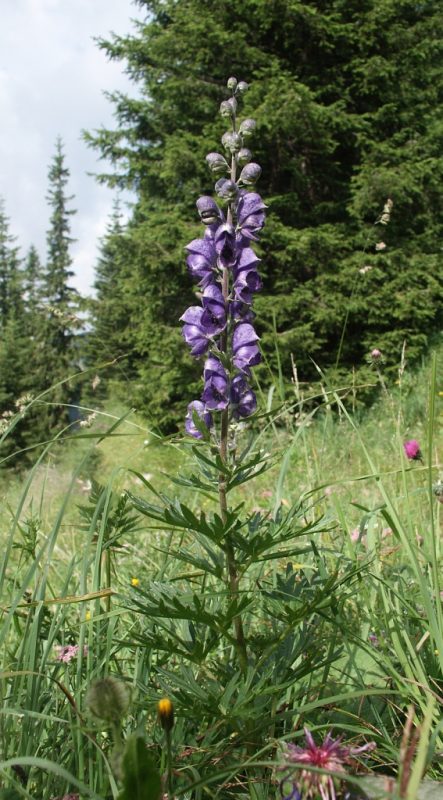
Monkshood, with its tall, helmet-like flowers, can rise between three to six feet, depending on the variety. This dramatic perennial prefers partial shade and thrives in rich, well-drained soils. Known for its striking blue or purple flowers, it can create a stunning visual impact in shaded areas.
While visually striking, it’s essential to note that monkshood is highly toxic if ingested, so place these plants judiciously in your garden. The upright stature and unique flower shape allow them to command attention while providing a distinct ambiance, making them a standout choice for shaded border areas.
Joe Pye Weed (Eutrochium purpureum)
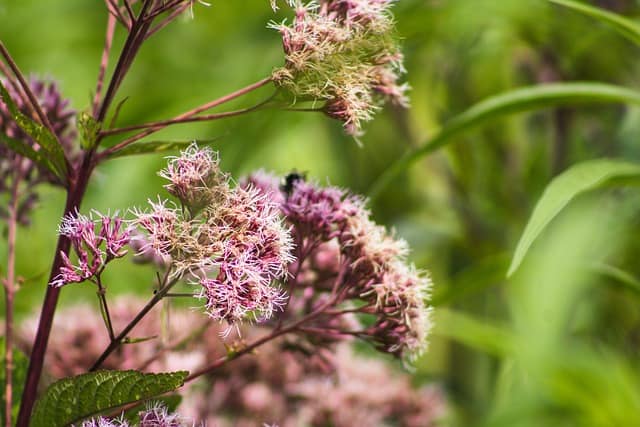
Joe Pye Weed is a magnificent tall perennial that can grow up to seven feet tall. It thrives in moist soils and partial shade, making it excellent for damp gardens or alongside water features. With its large clusters of pink or lavender flowers, this plant not only adds height but also serves as an important nectar source for butterflies.
Joe Pye Weed prefers to be planted in groups for maximum visual impact and is often an excellent addition to wildlife gardens. With a lush, bushy appearance, it provides a lovely contrast to other shade-loving perennials, bringing color and life to shaded areas as the summer months progress.
Fern-Leaf Bleeding Heart (Dicentra ‘King of Hearts’)
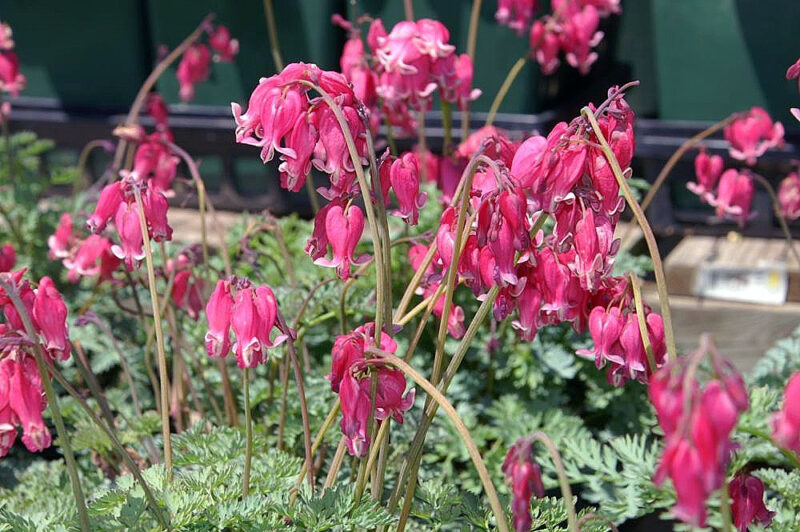
The Fern-Leaf Bleeding Heart is a smaller counterpart to its classic relative, but it holds its own with delicate, fern-like foliage and soft pink (or white) heart-shaped flowers that bloom in early spring. This perennial reaches heights of about one to two feet, making it ideal for the front of shaded borders.
The unique foliage of the Fern-Leaf Bleeding Heart makes it a charming ground cover or decorative accent in shady areas. With a preference for rich, well-draining soil, it’s also relatively low-maintenance, thriving with minimal fuss. Pairing this perennial with other early-spring bloomers can create a beautiful tapestry that welcomes the season of renewal.


